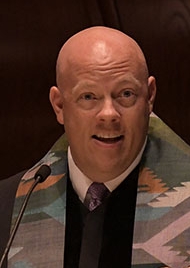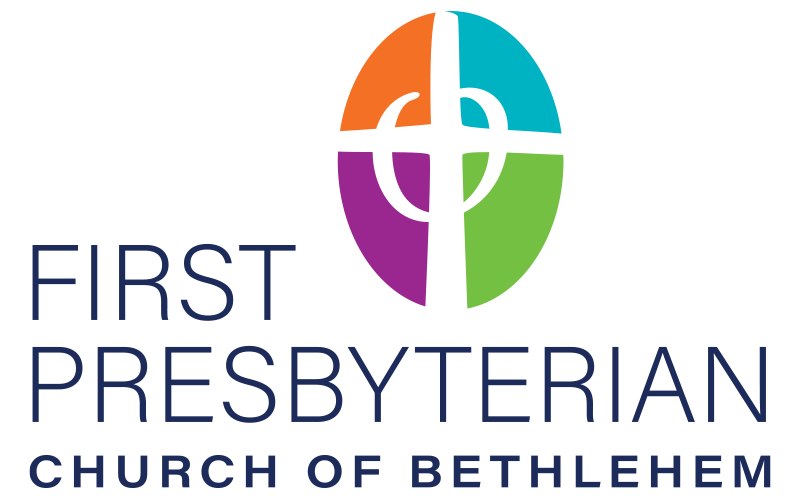A few days ago, probably in preparation for preaching on today’s Scripture passage, a pastor friend posed a simple question on Facebook: “What is love?” And the very first response that was posted was the same one that came to mind immediately for me, as well: “Baby don’t hurt me / don’t hurt me / no more.”
Now, it’s true, it’s not a very good answer to the question.  First of all, it’s not an answer at all; it’s barely a direct response. And second of all, it’s actually the opening lyrics from a quintessential European dance song from the early 1990s, and if you’ve ever heard it, it’s probably playing in your head right now because it’s also a quintessential earworm track that plays over and over in your head whether you like it or not. And, for the record, I do not, but if you know the song, at least we can commiserate together.
First of all, it’s not an answer at all; it’s barely a direct response. And second of all, it’s actually the opening lyrics from a quintessential European dance song from the early 1990s, and if you’ve ever heard it, it’s probably playing in your head right now because it’s also a quintessential earworm track that plays over and over in your head whether you like it or not. And, for the record, I do not, but if you know the song, at least we can commiserate together.
It got me thinking, though: isn’t it strange that so much music and poetry attempts to describe or define or explain or express the essence of love, and yet after literal millennia of attempts, it’s still such an open question? Robert Burns goes with a straightforward simile: “My love is like a red, red rose…” Shakespeare, predictably, is more lyrical: “Love is not love which alters when it alteration finds…O no! It is an ever-fixed mark that looks on tempests and is never shaken.”
Pablo Neruda, who probably gets my vote for the all-time best poet of love, takes it up another notch: “I love you as the plant that doesn’t bloom but carries the light of those flowers, hidden, within itself.” Elizabeth Barrett Browning tries a different tack, going with a descriptive list instead of images that begins, “How do I love thee? Let me count the ways.” And we could spend days going through other examples, but you get the point.
And the same is true for music; there’s a wonderful scene in the film (and new Broadway show) Moulin Rouge in which the main character, a bohemian poet in 19ht century Paris named Christian (interestingly enough) who is besotted with a beautiful singer named Satine, is trying to woo her. He’s been trying and failing for a while now, but this time he does so by professing his love using anachronistic popular song lyrics: “Love is like oxygen!” he exclaims; “Love is a many-splendored thing. Love lifts us up where we belong! All you need is love!”
And her initial response to his rapid-fire proclamations is one that maybe we can relate to at this point: “please don’t start that again.” Because no matter how hard we try, no matter how many different angles we approach it with, no matter how good some of the attempts are, they all ultimately fall short of the true depth and breadth and power of the meaning of love.
At first glance, it seems like Paul is just making a similar attempt as Christian in Moulin Rouge, with a whole series of interlocking attempts to describe and define love. He begins by telling us just how important it is, even setting it up in the previous chapter before today’s passage by saying, “I will show you a still more excellent way,” as he transitions to it from a lengthy discussion on how Christians need to be in community and cooperation with one another, sharing their particular spiritual gifts with one another for the benefit of all.
This passage, then, is his answer of what is most important for them to be able to do that. He says that we can have the most extraordinary spiritual gifts imaginable: speaking the languages not only of humanity but of the angels in heaven itself, or having prophetic powers to understand and explain every mystery and all knowledge in existence, or faith strong enough to move the very mountains, or the generosity to give away every possession, including one’s own body, in service to God; but if we don’t have love along with it, any or even all of that is worthless, useless, nothing. And that, of course, raises the question: OK, so what is love?
Thankfully, Paul does not respond with European dance music. Instead, he responds with one of the most famous passages in the Bible, one that is the go-to Scripture lesson for weddings because it is Scriptures greatest meditation on the meaning and essence of love: “love is patient; love is kind; love is not envious or boastful or arrogant or rude; it does not insist on its own way; it is not irritable or resentful; it does not rejoice in wrongdoing, but rejoices in the truth; it bears all things, believes all things, hopes all things, endures all things. Love never ends.” There are actually sixteen different expressions in that brief list: half of them are positive (“love is…”) and half are negative (“love is not…”). Together, they form a beautiful, well-crafted, and even provocative passage.
And yet, despite that, the English translation tends to water this passage down from the intensity of the original Greek text. Here’s one for the grammar nerds out there: the English translation you heard uses mostly adjectives, which are words that describe the nature or attributes of a noun. So, we get “love is patient; love is kind; love is not envious or boastful or arrogant or rude,” and so on. The words patient, kind, envious, etc. are all adjectives, which are used to describe the essence and meaning of love. But, as we’ve already established, describing the meaning or nature of love is generally a compelling but ultimately fruitless enterprise, because they all fail to capture love’s fullness and depth and power.
Here’s the thing, though: Paul doesn’t use any adjectives. In every single one of those expressions about love, the operative word is not an adjective; it’s a verb. Now, if you’re familiar with the Schoolhouse Rock educational cartoons from the 1970s and 80s that still float around in popular culture, you might have another song running through your head right now, which is one of my favorite ones. It’s called “Verb: That’s What’s Happenin’.” The cartoon itself is only three minutes long and originally aired in 1974, so even I didn’t see it when it debuted.
But it remained popular because it is an homage to the 1970s action movie theme music that relied on big soul bands with loud horn sections and strings that created something that was almost like orchestral funk music, like Shaft or Dirty Harry. And that action movie genre is an intentional pairing with the cartoon about verbs, because verbs describe action, not simply attributes of something static like an adjective does.
In the song that is the heart of the cartoon, all the lyrics are explaining what verbs are by using them to show how they describe an action: “I get my thing in action (Verb!) / to be, to sing, to feel, to live / Verb! That’s what’s happenin’! / I put my heart in action (Verb!) / to run, to go, to get, to give / Verb! You’re what’s happenin’!” And the whole song goes on like that until it ends with a rousing crescendo: “to work (verb!) / to play (verb!) / to live (verb!),” and finally, “to LOVE!!!”
Schoolhouse Rock is brilliant for many reasons, but recognizing that love is not only a verb, but perhaps the ultimate verb, is one of the biggest ones. And Paul would completely agree. In fact, Paul uses sixteen verbs in a row to describe not the meaning of love, but the manifestation of it: how love is enacted, lived out. So a much better translation would be something like, “love exercises patience; love demonstrates kindness; love does not seethe with envy, or boast about itself, or puff up with arrogance, or insult with rudeness.” Do you hear the difference? The power and energy of the active verbs instead of mere conceptual descriptions? That’s because in Jesus Christ, love never simply “is”; love “does.” The very essence of Christian love is not a set of concepts or emotions but rather of actions.
In fact, that’s the very essence of the Christian gospel, as well. Perhaps the most famous verse in the Bible, John 3:16, tells us that God so loved the world that God gave his only Son. To demonstrate and share God’s love, God gave God’s only Son, Jesus Christ; not a collection of writings to describe God’s love, not a set of practices to make us more aware of it or incorporate it into our daily lives, not a philosophical system to help us understand it.
There’s nothing wrong with any of those things to help guide or support our faith, of course, but that’s what they are: they point the way, but they are not the way. The true expression, manifestation, incarnation of God’s love is Jesus Christ, who enacted it and embodied it rather than simply described it, because love is, first and foremost, an action, not a concept or a feeling.
And so if we are truly followers of Jesus Christ, that means we are called to follow Christ by incarnating and enacting love. As we look back on 2021 and look forward to 2022 as a congregation on this day of our annual meetings, the metric we are called to use in reflecting on our ministry, above all others, is the question of how much what we do makes Christ’s love active in our life together and in the world.
I believe this is a congregation that knows that, believes that, and lives it out. It is why we strive to welcome all kinds of people to our worship and ministry and community, bringing a wide range of beliefs, identities, backgrounds, and commitments, and finding our unity not in looking or thinking or acting the same, but in Jesus Christ. It is why during the worst periods of the pandemic we have not simply wished people well, but created an entire ministry of preparing and delivering delicious and nutritious food to people for whom simply going to a grocery store was now a task fraught with peril.
It is why we have found creative ways to help feed our neighbors in the community who are currently without housing of their own and struggling to meet their basic needs. It is why we have worked so hard to provide ongoing digital options for our worship and faith formation ministries as well as our various leadership meetings; some of you may marvel at the idea that Zoom is an expression of love, but for people who are either unable to or uncomfortable with participating in person when that is possible, it is actually a powerful way of feeling seen and welcomed and cared for.
And it is why, as we look to new and expanding opportunities for worship and learning and community and service in 2022, we must continue to consider love as our guide and our goal, so that our hearts and minds and hands will all be singing: “we put our hearts in action: to pray, to sing, to care, to give; to serve, to work, to play, to live; to LOVE, that’s what’s happenin’!”
